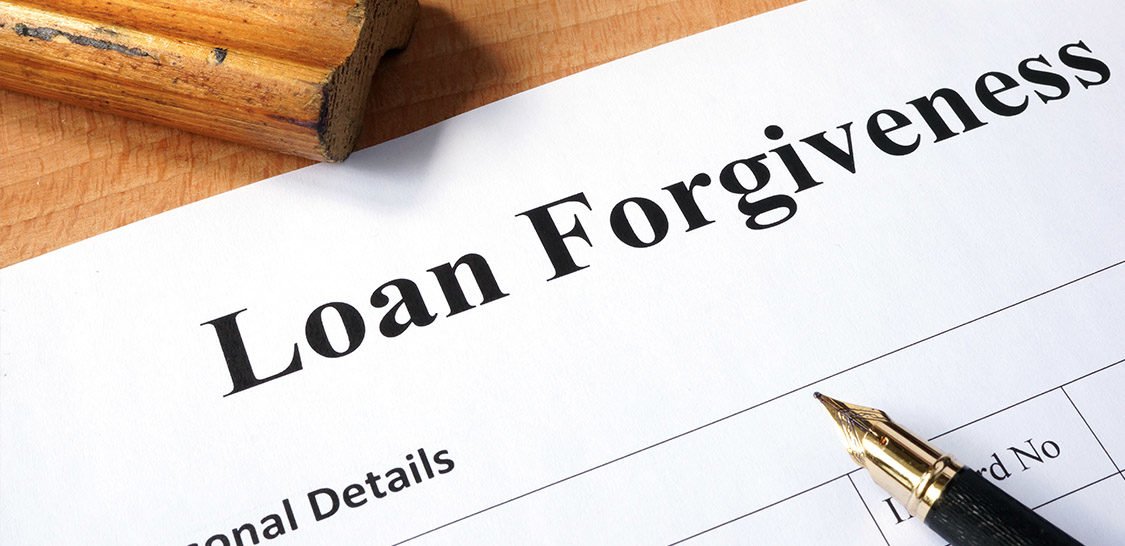On May 15, 2020, the Small Business Administration (SBA) issued a loan forgiveness application providing instructions for borrowers seeking information on how to more definitively calculate PPP loan forgiveness. On June 17, 2020, SBA and the U.S. Treasury released an update to its standard forgiveness application to reflect program changes under the PPP Flexibility Act, as well as a new EZ application. Form EZ is a more streamlined application for situations where the FTE and salary reduction tests (haircuts) are not an issue, and may only be used if the borrower meets one of three criteria:
- Borrower is a self-employed individual, independent contractor or sole proprietor with
no employees at the time of the loan application and did not include employees in calculation of loan amount. - No issue with salary/wage reduction test (haircut) AND borrower did not reduce FTEs
from 1/1/20 through end of covered period (except under special permitted circumstances
such as refusal of rehire offer or inability to hire similarly qualified employees). - No issue with salary/wage reduction test (haircut) AND borrower met PPP Flexibility safe harbor (during covered period, inability to operate at 2/15/20 level of business activity
due to compliance with HHS, CDC or OSHA safety requirements issued between 3/1/20
and 12/31/20). This was subsequently interpreted by the SBA and the U.S. Treasury to include businesses impacted by state and local shutdowns, such as non-essential business closures.
These applications clarify several grey areas, while some questions remain unanswered. Here are some highlights of our team’s analysis:
- Based on the application, payroll costs must comprise at least 60 percent of the forgiveness amount, not the loan amount.
- An alternative payroll covered period was introduced to allow borrowers with biweekly or more frequent pay periods to align the covered period with their payroll runs (e.g., Monday April 20 disbursement date and next pay period starts Sunday, April 26, then April 26 is the starting point for 56 days for payroll costs).
- The $15,385 cash compensation cap was revised for the new 24-week covered period, and there are different figures for owners versus non-owners:
- Non-owners: Prorated portion of $100,000 cash compensation is $46,154 (24/52 x 100,000) for a 24-week covered period; eight-week proration remains at $15,385.
- Owners (includes “owner-employees, a self-employed individual, or general partners” and is presumed to include C Corp and S Corp shareholders and independent contractors, as well): Prorated portion of $100,000 cash compensation is $20,833 (2.5/12 x 100,000) for a 24-week covered period. This is the cap for eligible owner comp and it is also subject to 2.5/12 of 2019 compensation if this amount is lower. The eight-week proration remains at the lesser of: $15,385 or 8/52 of 2019 compensation.
- C-corporation owner-employees are capped by the amount of their 2019 employee cash compensation and employer retirement and health insurance contributions made on their behalf.
- S-corporation owner-employees are capped by the amount of their 2019 employee cash compensation and employer retirement contributions made on their behalf, but employer health insurance contributions made on their behalf cannot be separately added because those payments are already included in their employee cash compensation.
- Schedule C or F filers are capped by the amount of their owner compensation replacement, calculated based on 2019 net profit.
- General partners are capped by the amount of their 2019 net earnings from self-employment (reduced by claimed section 179 expense deduction, unreimbursed partnership expenses, and depletion from oil and gas properties) multiplied by 0.9235.
- For self-employed individuals, including Schedule C or F filers and general partners, retirement and health insurance contributions are included in their net self-employment income and therefore cannot be separately added to their payroll calculation.
- An expense incurred during the eight-week covered period but paid in the regular course of business thereafter is permissible, rather than incurring costs but not paying them for some time.
- Companies can now avoid penalty under new special exceptions on the FTE reduction test for employees who were (a) fired for cause, (b) voluntarily resigned or (c) voluntarily requested and received a reduction of their hours.
- A series of tests appears to address the concerns that even an employee whose salary/wage rate didn’t change could have mathematically been shown as a decrease under the previous guidance.
- Cash compensation is defined as gross salary, gross wages, gross tips, gross commissions, paid leave (vacation, family, medical or sick leave, not including leave covered by the FFCRA), and allowances for dismissal or separation paid or incurred.
- Mortgage interest and rents apply to both real and personal property.
The application did create some new questions, such as:
- The second certification – funds used for unauthorized purposes – does not reference forgiveness and therefore deals with the loan portion of this provision. What’s unclear is whether a borrower should sit on non-forgiven proceeds to complete this item and then only the use the remaining loan amount after the covered period?
- Just how far can owners take the incurred or paid concept? Will they be permitted to cover eligible amounts which were deferred as of the start of their covered period then paid within the covered period? Will they be able to accrue and pay a portion (or all) of typical annual expenses, such as bonuses and discretionary retirement and HSA contributions?
- With respect to the owner’s compensation being capped at 2019 levels, is there any prohibition on a pay increase to the owner’s actively employed spouse or other relatives?
RKL’s team of business advisors will continue to monitor and interpret the latest guidance from the SBA regarding PPP loan forgiveness. If you have questions specific to your situation, please contact your RKL advisor today.




